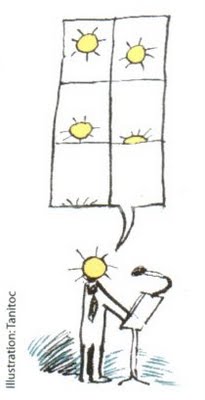For more information about the International Bande Dessinée Society, visit its website.
International Bande Dessinée Society
Seventh Bi-Annual Conference
Friday 8 and Saturday 9 July 2011
Manchester Metropolitan University
Manchester, England
Call for Papers
Time and Space
We welcome proposals on all aspects of time and space in
bande dessinée, including narrative and thematic levels.
Bande dessinée is a spatial medium which has the resources to manage both narrative time and narrative space in multiple ways. The indeterminacy of the interframe space allows for complex relationships between the chronology of the narration and the chronology of events within the diegesis: it may be used to distend or accelerate the narration, and to manipulate order through analepsis and prolepsis, rarely signalled as overtly as in film. Different temporalities may also co-exist within a single panel, as the capacity of the medium to blur boundaries between inner and outer worlds makes it possible for remembered or half-repressed material to break through into the daily reality of a protagonist. The representation of space is similarly complex, as the spatial transitions within the diegesis are overlaid by the non-linear spatial patterning of the page, and the book, as a whole.
Time and space have long been key themes of the medium: in the classic period of Franco-Belgian production, history, science fiction and adventure were major genres, and in more recent work by artists associated with alternative publishing houses, the intertwining of the personal and national past has emerged as a key area of interest, along with revisionist histories, often of the colonial period. Adventure has tended to give way to reportage, and to the exploration of the spaces of modernity, and postmodernity, including
non-lieux, heterotopias and marginal spaces associated with exclusion.
The signifying practices of the medium in relation to time and space have been theorised by scholars including Fresnault-Deruelle (linear and tabular dimensions of the medium), Benoît Peeters (the notion of the
périchamp, and the typology of
mise en page), Thierry Groensteen (codes of arthrology, regulating the articulation of panels), Jan Baetens and Pascal Lefèvre (spatial integration of text into the image) and Scott McCloud (typology of transitions). The ambition and experimentation of
bande dessinée that has been produced by contemporary artists has encouraged scholars to employ frameworks of analysis drawn from a variety of disciplines, including postcolonial theory and cultural geography. Current academic work on
bande dessinée is building on this theoretical base and extending it: we intend that the conference should provide a forum for significant advances, and in particular to create synergy between narrative and thematic approaches to time and space.
Please send papers to either
Dr Matthew Screech, Manchester Metropolitan University - m.screech@mmu.ac.uk
Or
Dr Ann Miller, University of Leicester - am84@leicester.ac.uk
Deadline: November 30, 2010
Image credit: By Tanitoc, from the IBDS website.
Labels: academic, cfps, conferences, IBDS, UK




